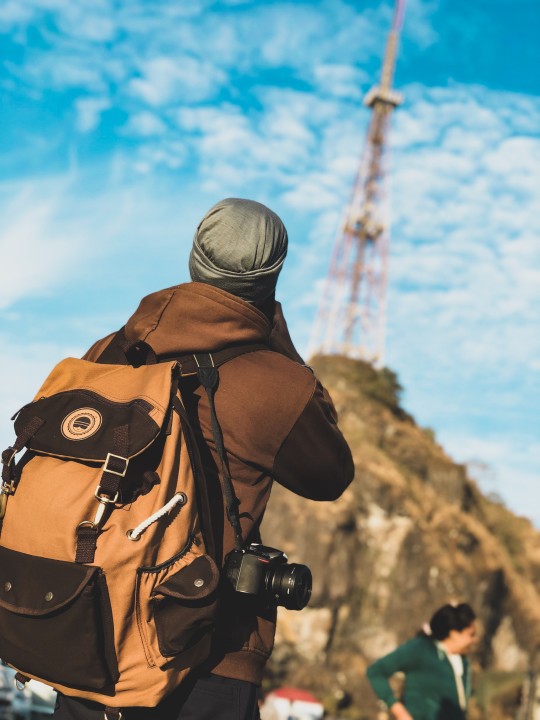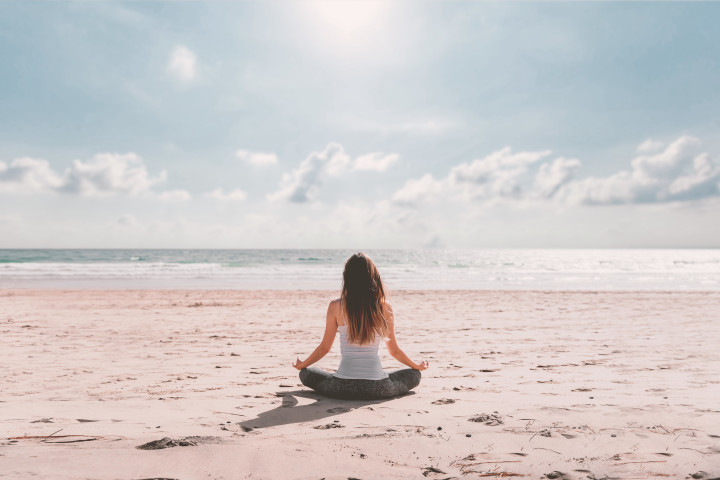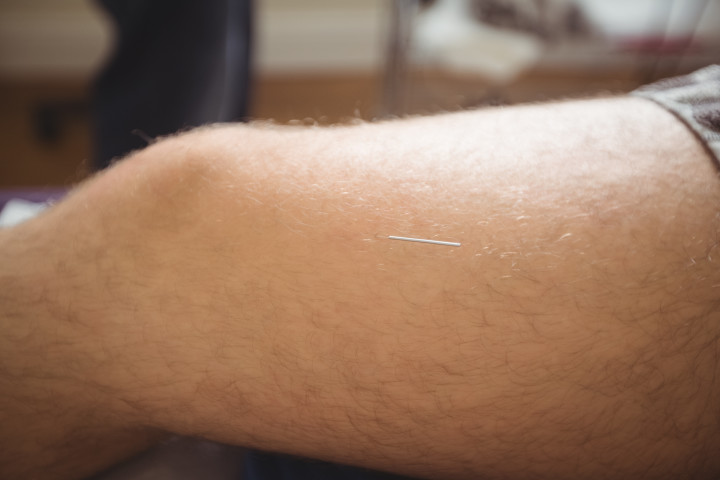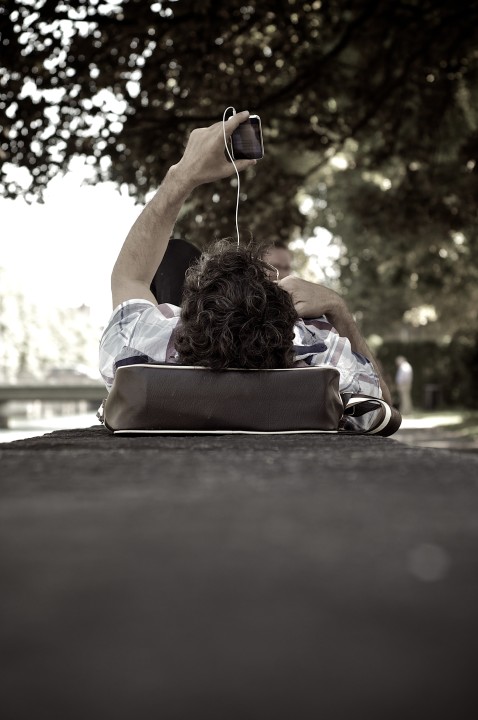Exercise and Addiction Recovery: Why the Two Are Connected

Recovering from addictive substances and activities can be a long and challenging journey. The thought of exercising might feel overwhelming or, at the very least, not a high priority. You may be surprised to learn that incorporating exercise early in addiction treatment could be very beneficial to your recovery. There are many kinds of exercise, including aerobic exercise, resistance exercise, and high-intensity training, among others. Some stages of addiction treatment and recovery are more suited to specific types of exercises than others. And everyone’s fitness level is different! There’s no one-size-fits-all exercise program. What you choose should be tailored to your circumstances and needs. Curious why exercise is beneficial to addiction recovery? Learn more about that and how to incorporate it into your life while in treatment and then recovery, plus some tips on how to start exercising while avoiding major pitfalls. Incorporating Exercise Into Addiction Treatment You may be asking yourself, does exercise in addiction treatment actually help your recovery from addiction? Or is it more tailored to treating common conditions that often occur with addiction, like anxiety and depression? It turns out that exercise is beneficial for all these conditions. Improving anxiety or depression may aid in addiction treatment and vice versa. Aerobic exercise early in addiction treatment may be of particular benefit for addiction treatment. Aerobic exercise increases blood flow throughout your brain and body. It also improves your cardiovascular health. This can be especially useful for treating substances like alcohol, which can decrease blood flow to the brain, resulting in decreased cognitive functioning. Aerobic exercise is also associated with better sleep. Many people in early addiction recovery have trouble sleeping as the brain attempts to find a new baseline and equilibrium. Aerobic exercise may also reduce cravings! Some research shows that as little as 30 minutes of aerobic exercise may reduce addiction cravings. Exercise early in recovery should be taken at a slow pace and preferably under the care of a healthcare professional. Taking these precautions will decrease your risk of injury. This is especially important because those who have been using addictive substances for a long time may have nutrient deficiencies. Unaddressed nutrient deficiencies can increase the likelihood of injury. If you’re entering an addiction treatment program, whether it’s inpatient or outpatient, ask if there is a gym, adventure therapy, dance, or other activities that encourage physical exercise. Exercise and Addiction Recovery After you start exercising in addiction treatment, you’ll want to keep this healthy practice up as you transition into long-term recovery. Breakthrough cravings for your substance of choice are very common, even after you’ve been in recovery for many years. Since aerobic exercise has been shown to decrease cravings, continuing to exercise while in addiction recovery will give you an outlet to cope with breakthrough cravings. Research has also shown that exercise performed while in recovery from addiction prevents relapse. It does this by decreasing negative feelings or emotions and increasing positive feelings or emotions. Addiction to exercise (fitness addiction) can occur, so you’ll want to make sure your exercise program isn’t becoming compulsive and obsessive. Your therapist is a great person to talk to about this. Why Does Exercise Help? If you’re wondering how exercise helps with the recovery process, there are a few theories that may help explain the benefits. While there is still a lot to learn about how the brain responds to various activities and stimuli, there are a few things we do know. One hypothesis that explains how exercise is beneficial for addiction concerns the brain chemical dopamine. Dopamine is the primary chemical involved in the reward pathway of your brain. That’s the same pathway affected by addictive drugs. Both addictive drugs and exercise increase dopamine in the reward pathway. When you stop an addictive substance or activity, there’s a natural drop in dopamine that occurs. Exercise can help stop—or decrease—that drop. Essentially, the drop in dopamine and resulting negative feelings are less than they would be if you didn’t exercise. Dopamine isn’t the only brain chemical that increases while exercising. Beta-endorphins are another type of brain chemicals that exercise releases. Endorphins are opioid chemicals released by your body that produce a sense of well-being. They also play a role in decreasing pain or discomfort. The endorphins released while exercising are often attributed to what people call the “runners high.” Early in recovery, feelings of dysphoria (“blah” feelings) and restlessness are common. The release of endorphins can help manage these feelings and potential relapses. 3 Tips for Incorporating Exercise Into Your Recovery One of the biggest mistakes people make when they start exercising for the first time in a while is going too hard too quickly. Maybe you’ve had the experience of going to the gym after a long period of not going and jumping back into your routines and the weights you lifted when you exercised regularly. The next morning you roll out of bed because your body is so sore it’s difficult to move! Not only does this strain the body, but overdoing it the first time back decreases the likelihood you’ll return anytime soon. 1. Set an Exercise Goal That Is ½ Your Ability Start off by planning to do about half of what you think you can do without causing too much soreness. So if you think you could walk two miles, make a goal of walking one mile. This will increase your inner confidence that you can accomplish something (AKA self-efficacy). Starting off slow also will ensure you’ll feel like working out again the next day. 2. Hydrate Hydration is often gets overlooked, but proper water intake is essential for your body and muscles to work the way they need to! If you’re someone who sweats a lot, you’ll also want to ensure you’re replacing electrolytes by drinking a low-sugar sports drink or Pedialyte® throughout your workout. 3. Listen to Your Body It’s always wise to listen to your body and what it’s telling you during a workout. Pushing yourself to the
Using Expressive and Experiential Therapy to Heal in Addiction Treatment

More than 23 million Americans suffer from addiction to drugs or alcohol. Unfortunately, 75% of them report not receiving any form of treatment for their addiction. If you do choose to get help, picking the right treatment can feel overwhelming because of the many different options. In the world of addiction treatment, talk therapy is the most well-known approach, but it’s not the right fit for everyone. Talk therapy can be scary, especially when you’re expected to discuss past trauma and difficult emotions. You might find it hard to describe your experiences, or you may not be ready to talk about them yet. Recently, other therapy approaches have gained the spotlight, including expressive and experiential therapies. These therapies focus on engaging in specific activities and experiences. They go beyond traditional talk therapy and provide unique ways of healing. Experiential and Expressive Therapy for Addiction Imagine addiction as an iceberg: The part above the water—that you can see—is just the symptom of something deeper. It shows only part of what is going on. The unseen part of the iceberg represents the trauma or pain that is driving the addiction. Therapy that addresses only the tip of the iceberg isn’t effective, and it means a higher chance of relapse. Experiential and expressive therapies provide a way to see what is below the surface. By exploring and resolving root causes, the chances for recovery are much better. Until past traumas heal, people tend to continue old behaviors. While all effective therapy should address the root cause(s) of addiction, experiential and expressive therapies provide unique alternatives to traditional therapy. They can also be used in conjunction with other therapies. Beyond healing past traumas, experiential and expressive therapies can help you: What Is Experiential Therapy? Experiential therapy grew out of experiential learning theory and comes in many forms, but it’s main goal is to help people heal through doing. It uses different activities and experiences as ways to engage in the addiction recovery process. Experiential therapy is often used alongside traditional talk therapy. Here are a few common examples of experiential therapy: Adventure therapy uses recreational activities, like hiking, backpacking, or rock-climbing, to aid in recovery. The thought of doing these things may feel uncomfortable, or even scary, but working through these hard activities can improve your problem-solving skills. Adventure therapy also supports trust-building and teamwork. Martial arts, like Jiu jitsu, are becoming more popular in treating addiction. They promote personal discipline and focus on the present moment and can also help establish a sense of personal control. This is helpful because as someone addicted to a substance, you may have felt out of control for a long time. Volunteering – Studies show volunteering helps in recovery from mental health problems and addiction. Addiction can cause people to focus inward—only on themselves. Volunteering is a way to shift the focus to others. People who volunteer report increased empathy and compassion. It can also provide community and connection. There are many ways to volunteer. You could: What Is Expressive Therapy? Expressive therapy combines psychology with different creative outlets. This therapy comes from the belief that everyone can express themselves through creativity. It encourages healing and growth in a non-traditional way. Because everyone expresses themselves differently, this is a very flexible therapy. Here are a few common examples of expressive therapy: Art therapy is about creative expression using various types of art, such as: Creating art is a way to promote: In addiction treatment, art therapy helps people express emotions without having to come up with words to talk about them. Art therapy also increases emotional understanding and confidence. Dance therapy comes from the idea of the mind-body connection. It uses movement to support all parts of you: emotional, physical, and mental. The purpose of dance therapy is more than exercise; movement expresses emotion and allows you to connect with your body. Bibliotherapy uses the written word to help the healing process. You may read specific books recommended by your therapist, compose poems, and/or write or tell stories. Bibliotherapy provides a unique space for expressing your feelings and emotions, and it can help you work through past hurts and tap into a creative side you may have been missing. Music can increase positive feelings in your body and your mind, and while music therapy can just involve listening to music, it’s also diverse! You could create music yourself by playing an instrument or writing song lyrics, or you could sing. Music therapy might also combine another activity (such as journaling) with the music process. Drama therapy is one of the most engaging therapies. It uses role-playing and other theater practices (like improvisation, projection, and metaphor) to help you share your stories. It can also help with expressing feelings and strengthening relationships. Drama therapy allows you to take on other “roles.” For many people, it can feel “safer” to convey their thoughts and feelings as someone else. Drama therapy also creates the opportunity to re-enact difficult experiences from the past, which can be healing. This expressive therapy can be done by yourself, as part of a couple, or with family members or other groups. If you’re interested in learning more about experiential and expressive therapy to help you work through your addiction and live a sober, happy life, contact Footprints to Recovery today. References
Adventure Therapy as Addiction Treatment

Adventure is defined by the dictionary as “an unusual, exciting, or dangerous experience, journey, or series of events.” Adventure therapy is a mental health discipline that uses the natural environment to help you cope with and overcome behavioral, cognitive, social, and affective disorders. You could say recovering from addiction is an adventure—full of unknowns that can be both scary and exciting. Most adventure therapy activities are outdoors, but some may also be indoors. Regardless of location, adventure therapy activities have one thing in common: an element of perceived or actual risk. To confront and overcome risk, you need to rely on trust in yourself, cooperation with others, and stepping out of your comfort zone. When you engage in adventure therapy for drug addiction treatment, you’ll be supported by a mental health professional, who will lead you through activities that promote communication, challenge your mind, and get you out of your everyday routine. How Does Adventure Therapy Work? At its core, adventure therapy is a type of experiential therapy. That means it facilitates talk therapy through hands-on activity. Art, drama, and music are other forms of experiential therapy. Adventure therapy has the added benefit of the natural healing properties of the outdoors. When you take part in adventure therapy, you might: While they may seem exciting or even overwhelming, adventure activities do another important thing: They can help put you in a more relaxed state. While exercising and enjoying time in nature, people find it easier to open up to their therapists or each other. Adventure therapy therefore facilitates talk therapy by helping you feel comfortable and at ease, which can be a difficult place to get to in substance abuse treatment. Many people find that even if they were unwilling or hesitant to engage in treatment before, they feel motivated after completing adventure therapy. Adventure therapy has other therapeutic benefits as well: Who Benefits from Adventure Therapy? Adventure therapy has been shown to be effective for a variety of people in a variety of age groups. While research on this topic has so far been mainly focused on youth (especially adolescents with behavior problems), this doesn’t mean adults don’t benefit from adventure therapy. It just means youth treatment programs are studied more. There’s also evidence that adventure therapy is helpful in treating substance abuse disorders among all age groups. Adventure therapy for addiction treatment is designed to challenge people who have struggled with substance abuse to overcome their perceived limitations, guilt, and other overwhelming emotions and develop an enhanced sense of self. Therefore, adventure therapy is a good fit for: Who Isn’t a Good Fit for Adventure Therapy? Addiction treatment must be individualized because every person’s experience with drugs or alcohol is different. Just as it might take time to discover the right addiction therapy for you, you may find adventure therapy isn’t the best fit. It should be noted that a physical disability doesn’t have to keep you from participating in adventure therapy. The primary benefit of this approach lies in its exposure to nature and some element of risk. These activities can be adapted to suit all abilities and skill levels. Even so, the potential risks of adventure therapy should be weighed against the benefits. Not all those recovering from addiction enjoy being outside and in nature. Some may have anxiety related to the outdoors. Others may have health problems that don’t necessarily keep them from participating in outdoor activities but may keep them from enjoying outdoor activities. Examples of those for whom adventure therapy may not work well include: In short, adventure therapy can only be effective if you’re able to find the outdoors invigorating and enjoyable. How Does Adventure Therapy Compare to Other Addiction Therapies? As with all experiential therapies, adventure therapy is more about doing than saying, at least at first. Its benefits come from the sense of wonder, accomplishment, and pride it can bring you. Other therapies have these same benefits but achieve them through much different means. For example, cognitive behavioral therapy is a traditional talk therapy in which the therapist has a conversation with the client. This conversation doesn’t have to happen sitting across from one other in an office, but it often does. Dialectical behavior therapy, which is typically held as a group with participants sitting in a circle, is also talk-oriented. These approaches rely on cognitive change—changes in the way you think that then impact your moods and behaviors. They teach behavioral skills you can apply to different situations and take into the future. Traditional addiction therapies, like talk therapy, have proved to make lasting impacts. Are the changes that come from adventure therapy sustainable? Studies suggest they are. By definition, adventure therapy is time-limited. Its positive effects may best be sustained by continuing to practice mindful adventure as relapse prevention. Adventure Therapy: Just One of Many Options at Footprints to Recovery Here at Footprints to Recovery, we are proud to offer adventure therapy among our list of holistic and evidence-based treatments. Whether you are new to adventuring or seeking to return to it, this form of therapy could become an integral part of your treatment plan. Being strong and proactive in addiction recovery doesn’t mean you won’t make mistakes. Like a climbing a mountain, the path to recovery involved inclines and dips, corners and traps. Addiction recovery is a continual process of renewal. This journey is an adventure—scary and arduous at times, but in the end, well worth the climb. References
Using Music To Heal in Addiction Recovery

Music is a powerful source for healing. The melodies and lyrics of music have a way of deploying emotional responses in a healthy and productive fashion. Music can help individuals cope with pain, whether it be emotional or physical. From a scientific perspective, music lowers the Cortisol levels in our bodies, which is the hormone that induces stress and therefore, helps us to experience relief from our daily life stressors. One of the wonderful things about music is that everyone can find some type of music that matches their listening preferences. Here are ten ways in which music can help you heal: 1. Sleep Aid Listening to music can help calm the mind and therefore, lead you into a restful sleep. This is a much healthier way to catch those ZZZZ’s as opposed to non-holistic sleep aids. 2. Stress Relief Because music stimulates a biochemical response within the human body, it can act as a stress reliever. Have you ever been angry and, in order to cope with the anger, blasted your favorite ‘angry music’? Don’t you feel better afterward? I know I do! 3. Pain Relief Believe or not, music does have the ability to distract the mind from pain by activating sensory pathways in the body that are used to combat the pain pathways. In a nutshell, music can help distract you from feeling the pain. 4. Fights Anxiety Music is like a massage for your mind. It can be an excellent resource when you are feeling anxious by massaging away at the anxiety and providing relief to the brain. 5. Fights Depression Genre plays a crucial role in helping to reduce feelings of depression when it comes to music. Listening to calm and soothing music will most likely help soothe the feelings associated with depression versus heavy metal or punk rock. 6. Eases Nervousness Music that has a catchy beat or a quick pace can often times help calm the nerves, particular before an event that gives you the jitters or butterflies in your stomach. 7. Promotes Physical Activity Have you ever gone to the gym and listened to fast-paced music? If the answer is yes, did you feel more motivated to work out harder and longer? I know when I go to the gym, the faster the pace the harder I work. Listening to your favorite fast-paced tracks can help boost your motivation and your endurance while engaging in any form of physical activity. 8. Improves Cognitive Function Believe it or not, music can boost one’s cognitive abilities! Have you ever listened to music when you are working on a task that requires extreme focus? Perhaps while studying, writing a paper, etcetera? If you haven’t, try it sometime and see for yourself. 9. Meditation It is no secret that listening to slower music can have a calming effect on an individual. The slower music allows your brainwaves to slow down, thereby putting you into a calm and meditative state. This can help ease symptoms associated with behavioral problems. Think about trying this next time you feel anxious or even try it with your child if they’re having a rough day and needs some space to calm down. 10. Blood Vessel Function The human body has a very physical response to music. When you are listening to music you really enjoy and that makes you happy, your blood flow increases, which in turn promotes healthy blood vessel function. Neat right?! Next time you listen to music, take note of how your body is responding, whether it is physical, emotional or both. Below are quotes from staff and patients who have used music as a healing technique: “Music is a calming source for me. Once I pick up that guitar and touch the strings, it helps soothe the noise in my mind. I feel like I can just allow my emotions to come out through the sounds of the guitar” “Music allows me to find my center. I like to play calm and melodic music when I am meditating or doing yoga” “Music makes me feel more centered. I enjoy the fast-paced genres more than anything else. Regardless of my mood, the music helps me to feel more relaxed and less stressed” Author: Bonnie Wright, MBA – Footprints to Recovery – Executive Director Colorado
5 Unique Ways to Have More Energy

You are clean and sober so, you should be feeling on top of the world. You should be full of energy. You should be jumping out of bed at 6:00 am, no alarm clock necessary. You have so much energy that one might even call you over productive. You are basically a living breathing Disney character. This is how life goes when you are in recovery, right?!?!? Wrong! More often than not, someone who is new to recovery experiences overwhelming bouts of fatigue. Your body, mind, and spirit have gone through shock. You were dependent on a substance that, for many people, was helping you function or even get out of bed. So how do you raise those energy levels? If the first thing that came to mind was a pot of coffee, 2 Monster energy drinks, and a bag of sugary candy, PLEASE read on! 1. Tap Your Thymus Did you just start tapping around the top of your leg? Not even close! Your thymus is located at the top middle part of your chest, just under your collarbone. It is called by many the “happiness point\” on your body because it is the organ that controls your lymphatic system which is responsible for rid your body of toxins. Lightly tapping the area boosts energy, relieves stress, increases strength, and triggers the production of T-Cells which keep your immunity up to fight off anything from the common cold to a nasty flu virus. Try tapping it for 20-30 seconds while breathing deeply for an instant energy boost. 2. Drink Some Matcha… At 10:30 AM Can’t survive without your java in the morning? Time to reach for something green. Matcha is a finely ground powder of specially grown and processed green tea leaves. It has a quarter of the caffeine that coffee has but, unlike your morning cup of joe, it will not give you the caffeine spike just to drop your energy 3-4 hours later leaving you running for your second cup. Matcha gives you a sense of calm alertness not to mention, it boosts your mood and metabolism. Need that caffeine fix as soon as your eyes open? Try and wait until 10:30 am. Studies prove that cortisol levels spike between 8:00-9:00 AM, and during this time your body isn’t able to process caffeine as effectively. Waiting until 10:30 AM can maximize your morning buzz. 3. Make Your Happy List I hate naps! You know how everyone says, “just take a quick power nap and you will feel so much better!” If by quick power nap you mean go to sleep for the next 3 hours and wake up not knowing what time it is or how the heck you are going to get to bed at a reasonable hour, then yes, I’m awesome at naps. If it’s 3:00 during a workday and, I’m hitting an afternoon slump, I take a 15-minute break and bust out my calendar. I look at the next few weeks and what I have going on that brings me enjoyment. Next, I make a list of possible outfits I want to wear, a dish or recipe that I want to bring to a friend’s house to watch football on Sunday, or I look at the blank spaces in my schedule and plan out going to the movies or catching up with a friend I haven’t seen in a while. I find the excitement of seeing all the good times ahead to be an instant endorphin booster! 4. Stop and Smell the Rosemary When you are ready for bed, it’s time to sip on the chamomile tea and spray your sheets with a little bit of lavender. When you need some pep in your step, consider taking in a couple whiffs of rosemary. Rosemary is one of the essential oils that is stimulating to the body. Scholars in ancient Greece used to wear wreaths of rosemary around their head to boost their brain power. Whether it’s fresh from the garden or a little bottle of the essential oil, just a few breaths in can instantly trigger alertness and invigorate your senses. 5. Pump Some Iron and Eat it Too! It seems counterproductive to go to the gym when you are tired but, exercise strengthens circulation and heart muscles so, it gives more energy to your body. On some of my laziest days, I make myself go to the gym in the morning. Although I may be grumbling the whole way there and telling myself, “30 minutes and I’m done”, I’ve found that my morning workouts give me sustained energy throughout the day. If you find you are constantly in a state of exhaustion, you could have an iron deficiency. Iron is essential for producing hemoglobin, which carries oxygen to your body’s cells, where it is used to produce energy. Try filling your daily meals with leafy green veggies, dried beans, and red meats. Who knew a little steak could give you an energy boost when you can’t get your body moooooovin’. Listen, I know that some winter mornings it’s impossible to get out of bed when it’s pitch black outside. At times, that sun beaming in your window at 5:45 in the summer can make you wish it was winter. Instead of going for the usual boosters to skyrocket you into your day, why not try one of the above suggestions. The only thing you’ve got to lose is your mid-day caffeine crash and, I’ve got a sinking feeling it won’t be missed.
How Does Acupuncture for Addiction Work?

Acupuncture is a holistic modality that addresses emotional, spiritual, physical, and mental health. Acupuncture is recognized by the National Institute of Health (NIH) and World Health Organization (WHO) for treating numerous conditions. An ancient Chinese medicine used for thousands of years, acupuncture is based on the meridian system. According to traditional Chinese medicine, meridians are pathways in the body where life energy or “qi” flows. There are 12 meridians. Most are named for the organ in the body that they are associated with (ex. heart meridian, lung meridian, liver meridian). Acupuncture is the practice of using very fine, sterilized needles — the thickness of a hair — at pressure points to stimulate parts of the nervous system. The needles are inserted into specific places to unblock a blockage, move blood flow, and promote overall balance in the body. Acupuncture is sometimes used in holistic mental health treatment and addiction treatment programs. Common conditions acupuncture therapy has been used to treat include: How Does Acupuncture Help Addiction? Research on acupuncture is still in its infancy. Using acupuncture for addiction began in the early 1970s in China when a physician observed that acupuncture provided a reduction in withdrawal symptoms for people who abused opiates. Acupuncturists found that inserting and manipulating meridian points could possibly help reduce cortisol and balance dopamine levels to decrease withdrawal symptoms and cravings that come from drug and alcohol detox. NADA or AcuDetox is a specific acupuncture protocol developed to ease alcohol and drug detox symptoms. Developed 40 years ago by the National Acupuncture Detoxification Association, research suggests AcuDetox is an effective addiction treatment as a relapse prevention tool and a complement to traditional approaches like cognitive behavioral therapy. It’s been shown to: Holistic addiction recovery centers often use AcuDetox during drug and alcohol detox and throughout treatment. Acupuncture for addiction works on the central nervous system to reduce the severity of common alcohol and drug withdrawal symptoms like: Acupuncture for addiction can evoke a better sense of calm and well-being. The less substance abuse withdrawal symptoms you’re experiencing, the better you’re able to focus on treatment and getting better. Less withdrawal symptoms may also prevent relapse. People who try to withdraw from drugs and alcohol on their own without the help of professionals are likely to relapse because they want to stop the physical or psychological withdrawal symptoms that can come with it. What Is an Acupuncture For Addiction Session Like? AcuDetox draws on auricular acupuncture protocols targeted to addictions, trauma, and mental health disorders. The actual acupuncture session and experience is much like a regular acupuncture session. An acupuncturist inserts very small, sterile needles into your skin and then you sit still and quietly for at least 20-30 minutes. NADA acupuncture targets five areas on the ear believed to be associated with substance abuse. This type of acupuncture is commonly performed in a group and sessions last from 30-45 minutes. Participants report feeling energized after AcuDetox, but also calm and relaxed. Acupuncture for Co-Occurring Disorders Mental health disorders sometimes co-occur with drug and alcohol addiction. People with anxiety, depression, and other conditions may abuse drugs and alcohol to cope with symptoms of mental health disorders. Effective substance abuse treatment must address drug and alcohol abuse as well as underlying issues like mental health disorders. Acupuncture can be a complement to traditional mental health disorder treatment. Some research shows acupuncture as a promising depression treatment when combined with antidepressants and therapy. It can help increase quality of life and social-emotional health. Studies also suggest acupuncture can be an effective anxiety treatment. Dual diagnosis treatment that includes acupuncture can help with the stress, anxiety, and depression that are often associated with alcohol and drug addiction. Get Holistic Addiction Treatment at Footprints Footprints to Recovery takes a holistic approach to alcohol and drug addiction treatment. We combine evidence-based therapies like individual, group, and family therapy with alternative approaches so that you can begin repairing the physical, mental, and spiritual wounds of addiction. We have acupuncture specialists trained in the NADA approach, and we offer a variety of other alternative therapies. Depending on the Footprints to Recovery location, alternative addiction therapy options include approaches such as yoga, drum circle, psychodrama, nutrition services, EMDR, and art therapy. Our alcohol and drug rehabs offer a full continuum of care that includes: If you or a loved one is struggling with drug or alcohol abuse, call us for a free, confidential consultation. We can help. References
10 Songs to Listen to in Recovery

Music one of the best therapeutic tools that we have. The artists below found motivation in writing and releasing their songs in hopes it would reach out and inspire someone. Use these songs, or others that speak to you, in times of need and know that you will get through tough times. 1. “Starting over” by Macklemore “If I can be an example of getting soberThen I can be an example of starting over We fell so hardNow we gotta get back what we lost” We all may make mistakes when changing our behaviors. This song, and many of Macklemore’s songs tell us it is okay to keep trying and that everyone struggles sometimes. 2. “Dare you to move” by Switchfoot “Tension is here. Between who you are and who you could be. Between how it is and how it should be. Maybe redemption has stories to tell. Maybe forgiveness is right where you fell. Where can you run to escape from yourself? Where you gonna go Where you gonna go? Salvation is here. I dare you to move…” This is an older pick for a song and it is a good one. It talks about how action is going to get you through hard times and do not forget that. 3. “Alive” by Sia “And I’m still breathing, I’m still breathingI’m still breathing, I’m still breathingI’m alive (You took it all, but I’m still breathing)” Sia is an amazing artist from lyrics to vocals. This song highlights the focus that no matter how difficult or how many obstacles you have been through or are yet to happen, that you are still here and fighting. 4. “If you want love” by NF “If you want love, you gon’ have to go through the painIf you want love, you gon’ have to learn how to changeIf you want trust, you gon’ have to give some awayIf you want love, if you want love” NF is a powerful musician and his lyrics are crucial. If we all want change and to work through things that have been difficult, we have to make sacrifices and remember that over time change will come. This is not an easy message to remember, however, it is an important one. 5. “Praying” by Kesha “I hope you’re somewhere prayin’, prayin’I hope your soul is changin’, changin’I hope you find your peaceFalling on your knees, prayin’” Kesha wrote this song to show her struggles and how she persevered through them. This song highlights that guidance can come from outside of us when we just don’t have the strength to get through it alone. This is an important message to remember. 6. “The Fighter” by Gym Class Heroes “Here comes a fighterThat’s what they’ll say to me, say to meSay to me, this one’s a fighter” This song promotes the inner strength and motivation that is important when working through issues and struggles. Everyone willing to work and better themselves is a fighter. 7. “Otherside” by Macklemore and Ryan Lewis “We live on the cusp of death thinkin’ that it won’t be usIt won’t be us, it won’t be us, it won’t be usNah, it won’t be us” When we are struggling with change, our thoughts can tell us things that are not always true, and this song exemplifies that. This is another Macklemore pick that inspires to keep holding on through the hard times. 8. “By the Grace of God” by Katy Perry “…Laying on the bathroom floor. We were living on a fault line. And I felt the fault was all mine. Couldn’t take it anymore. By the grace of God. There was no other way. I picked myself back up. I knew I had to stay. I put one foot in front of the other. And I looked in the mirror. And decided to stay…” Katy Perry has said that this song was largely inspired by the difficulties she faced while going through her separation from Russel Brand. The song explores the struggles we all may face at times and the heaviness of it; however, it provides a glimpse into the strength thats within us all to move on. 9. “Hunger” by Florence and the Machine “I thought that love was in the drugsBut the more I took, the more it took awayAnd I could never get enough” She speaks a raw truth about searing for a tangible answer in emotional or spiritual problems. She goes on to normalize the feelings and urges we all have and attempts to provide hope in the search for those answers. “Don’t let it get you down, you’re the best thing I’ve seenWe never found the answer but we knew one thingWe all have a hunger” 10. “Drug Addiction” by Colicchie “My pain’s deep, I have been through hellI managed to survive so I got a story to tell” The story that he tells is a relatable one that ends with solutions and hope to the worries that we have. “I felt pain, look I’m not afraid to cryMy life changed once I was willing to tryI’ve been giving many chances now it’s truly do or die” It’s now time to update your playlist! Are You Trying to Quit Using Drugs or Alcohol? We offer an array of addiction treatment services & therapies Author: Stephanie Pruefer, LPC, CADC – Footprints to Recovery – Primary Counselor
Reclaim Your Energy in the New Year

Waking up to snow falling swiftly outside my window a few years ago, I rolled over to check my phone in hopes that I would be greeted by a text revealing that I did not have to trek through the winter wonderland outside my window and venture to work that day. To my surprise, my wish was granted – and I sighed in relief as I sunk back down into my bed, finally being permitted to take a day to rest. . . It was the first day I was able to rest in months and I could barely move. Working two jobs that I was whole-heartedly devoted to left me with little time to care for or connect to me. In my state of exhaustion, I realized that I had been neglecting the most important relationship in my life – the one I hadn’t created with myself. I was in a state of doing and never took the time to slow down, soften and just be. In that moment I made a commitment to me; the person I often had the hardest time keeping a commitment to. My resolution was to reclaim my energy – to create time and space to care for and honor myself. On my quest to reignite my energy and light I decided to go inward – to reconnect with my needs; strengthening my mind, spirit and body. Here are seven ways that I reignited internal energy reserves: 1. Meditation – Engage in a daily meditation practice. Meditation allows me to let go of my roles and responsibilities and creates space to just “be” with me. Its through meditation that we become more in tune with our inner process. If you’re more of a “do-er” start meditating at night as a way to wind down and complete the day. If you need a little more inspiration to get your day moving, meditation can help set your mind at ease and gain focus for the day ahead. 2. Exercise– Daily movement is essential for well-being. Ask yourself if you are honoring your body’s need to move on a daily basis. Yoga helped me reconnect my mind body, breath and spirit. Most importantly it taught me how to breathe and to honor my body (my oldest friend) by moving with my breath every day. 3. Diet– Start looking at food as fuel. Ask yourself – what can I put in my body that is going to make me feel the best and give me the best results? Engage in mindful eating. I chose veganism because eating fresh, leafy greens, fruits and vegetables fill me with energy and light. I no longer crave foods that don’t support my physical well-being 4. Relationships– Tighten up your circle of friends. Are you spending time with people who energize you or those who drain your emotional reserves? I made a conscious effort to spend time with friends who are uplifting, make me laugh until I cry and adhere to my desire to uphold wellness; mind, body and spirit. 5. Spirituality- Connect to a higher power, whatever that may be for you. Connection with something greater increased my capacity for faith and hope in all that I do. 6. Nature- Get outside. Spend time with mother nature every day. Whether it be a walk on your lunch break or a hike in the woods. Human beings are animals after all, and we require time to feel in tune with Earth. I feel most alive when I am breathing fresh, clean air surrounded by the beauty of our planet. 7. Reboot- Find something that you love to do. Do you love to draw, read, write, cook, sing opera, play an instrument? Make time each week to do something that makes you, you. I found that when I became curious about my interests, I found more of them and making space for them made me happier as I was getting to know myself. In reclaiming my energy, I stumbled on a journey to cultivate self-love. I found pieces of myself that I had neglected for far too long. I found fuel to drive me. I now recognize the sense of wholeness that comes from linking mind, body and spirit. In 2018, let love go inward first – then we can be an expression of glowing energy and inspire those around us to do the same. Author: Chelsea A. Hoagland, MSW, LSW – Footprints to Recovery – Substance Abuse Counselor





